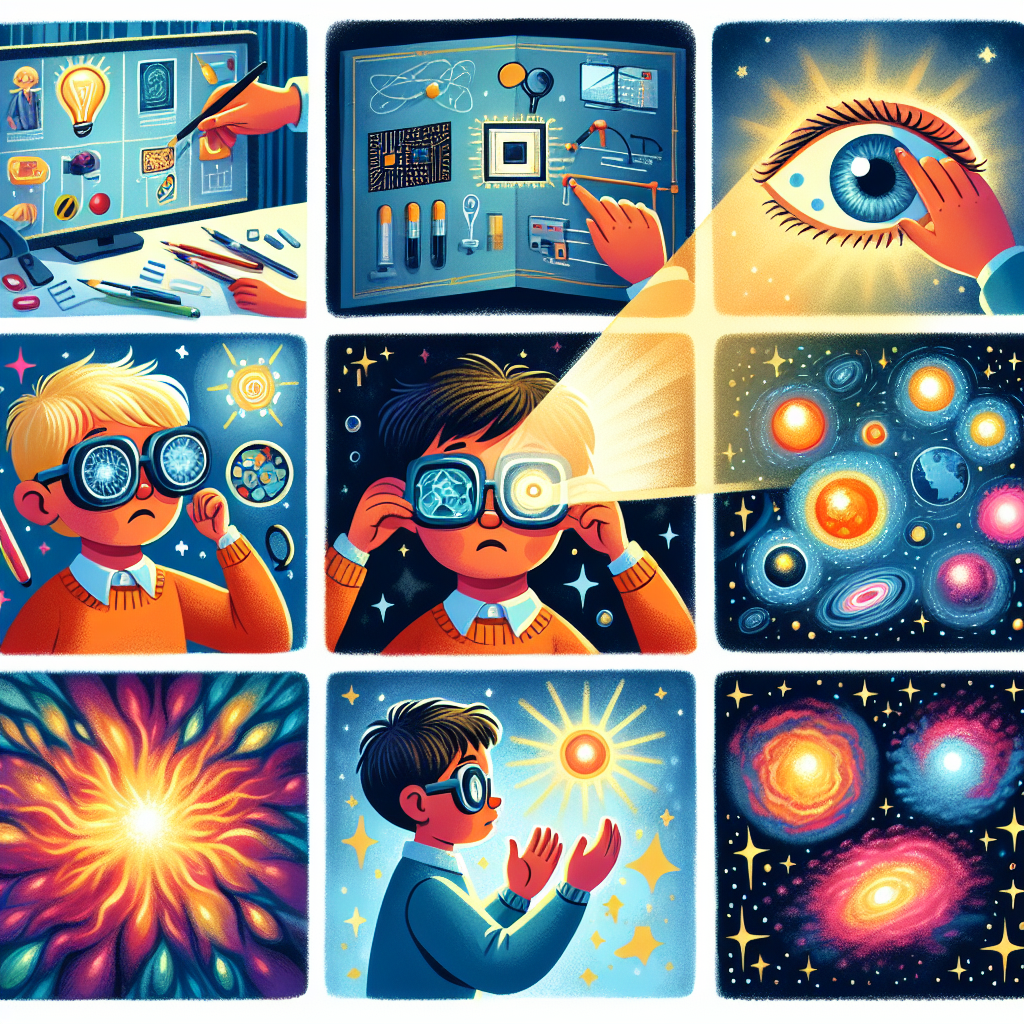23rd October 2025
Recent scientific breakthroughs are pushing the boundaries of what's possible, from helping the blind to see to potentially observing dark matter for the first time. Here's a roundup of the latest innovations and discoveries making waves in the scientific community.
Restoring Vision with Microscopic Technology Stanford scientists have achieved a remarkable breakthrough in vision restoration technology. They've developed a chip smaller than a grain of rice that can be implanted in the eye to help blind individuals perceive shapes and light. This tiny device creates a new communication pathway between the eyes and the brain, with Dr. Lee, a leading researcher, describing the effect as "turning the lights on in a dark room." This advancement could dramatically improve the quality of life for those with vision impairments.
Conservation Through Collaboration In a heartening development for marine conservation, scientists and fishers are working together to protect manta rays. This unique partnership combines traditional fishing knowledge with scientific expertise to prevent these majestic creatures from becoming entangled in fishing nets. Fishermen now actively participate in conservation by monitoring manta ray habitats and adjusting their fishing practices accordingly, demonstrating how collaboration can lead to effective environmental solutions.
Visualizing Nature's Invisible Forces Researchers at Chalmers University in Sweden have made an exciting discovery in understanding adhesion forces. Using a combination of gold, salt water, and light, they've developed a method to visualize the invisible forces that make objects stick together. This technique reveals these natural adhesive forces as colorful patterns under a microscope, offering new insights into phenomena like dust adhesion and gecko wall-climbing abilities.
Innovative Energy Solutions Found Energy, an innovative startup, has developed a groundbreaking method to convert used aluminum soda cans into clean energy. Their process generates heat and hydrogen by introducing water to aluminum, offering a sustainable energy solution. This technology is ready for real-world implementation and could revolutionize how we think about recycling and energy production.
Illuminating Dark Matter Scientists at the University of York have proposed a revolutionary theory about dark matter: it might actually emit a faint glow. While traditionally thought to be completely invisible, researchers suggest that dark matter could cause subtle color changes in light that interacts with it. This discovery could lead to the first direct observations of dark matter, potentially transforming our understanding of the universe.
International Aid Innovation The European Union has proposed an innovative approach to international aid by planning to repurpose frozen Russian funds to support Ukraine. This creative financial solution could provide significant assistance to Ukraine while making use of currently inactive assets, demonstrating how financial resources can be strategically redirected for humanitarian purposes.
These developments across various scientific and social domains showcase humanity's continuing progress in solving complex problems through innovation and collaboration. From medical breakthroughs to environmental conservation and clean energy solutions, these advances promise to shape a better future for all.
This article is based on today's episode of KidsNewsFlash, a daily news podcast for kids and families. Listen on Apple Podcasts, Spotify, or wherever you get your podcasts!

